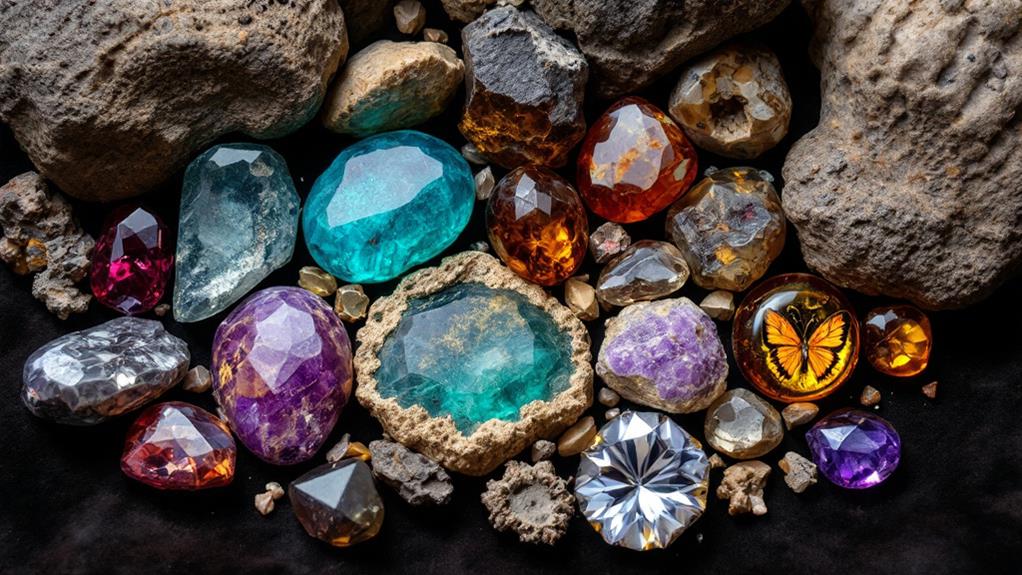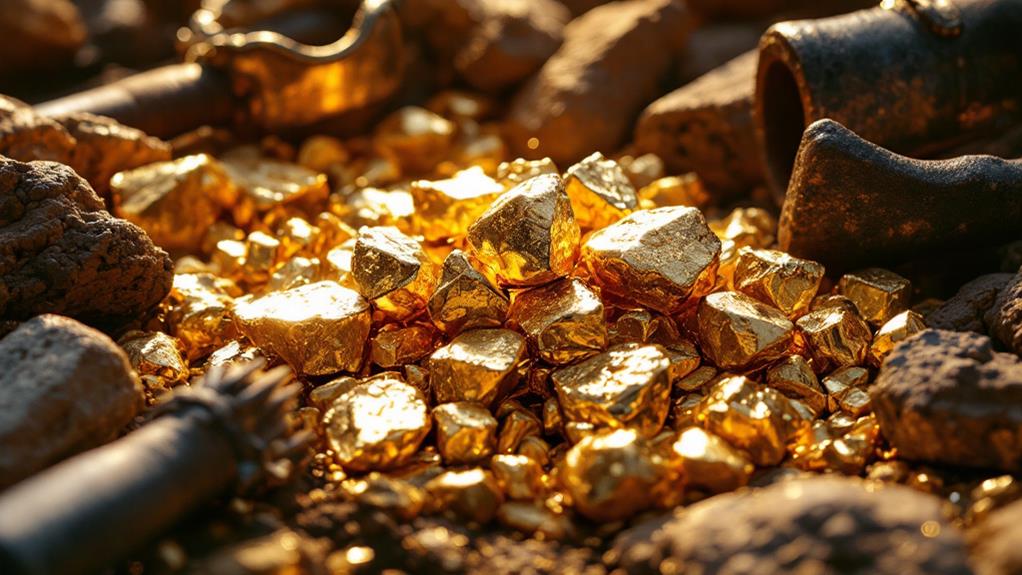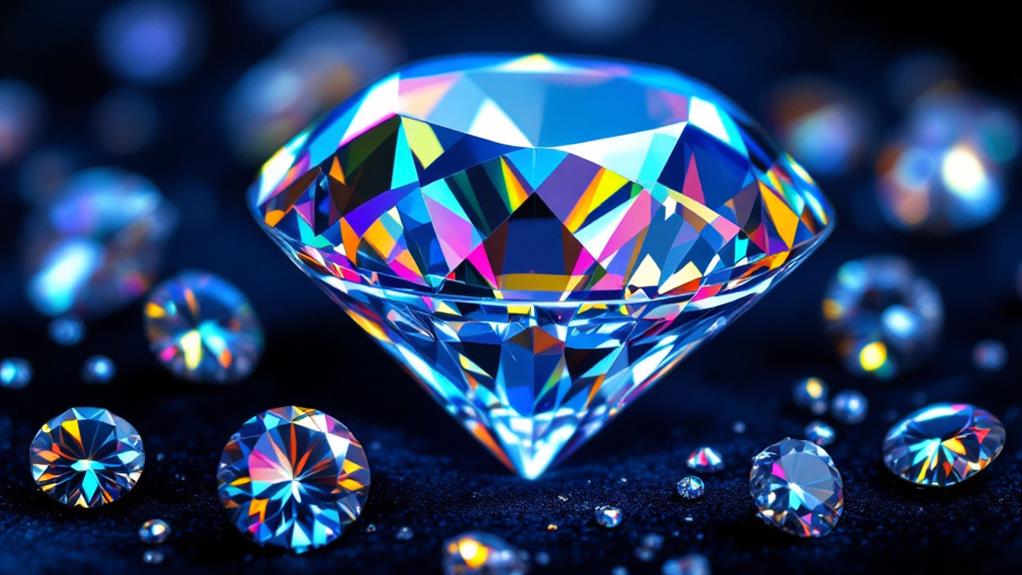Fascinating Facts About Platinum: The Rare Precious Metal
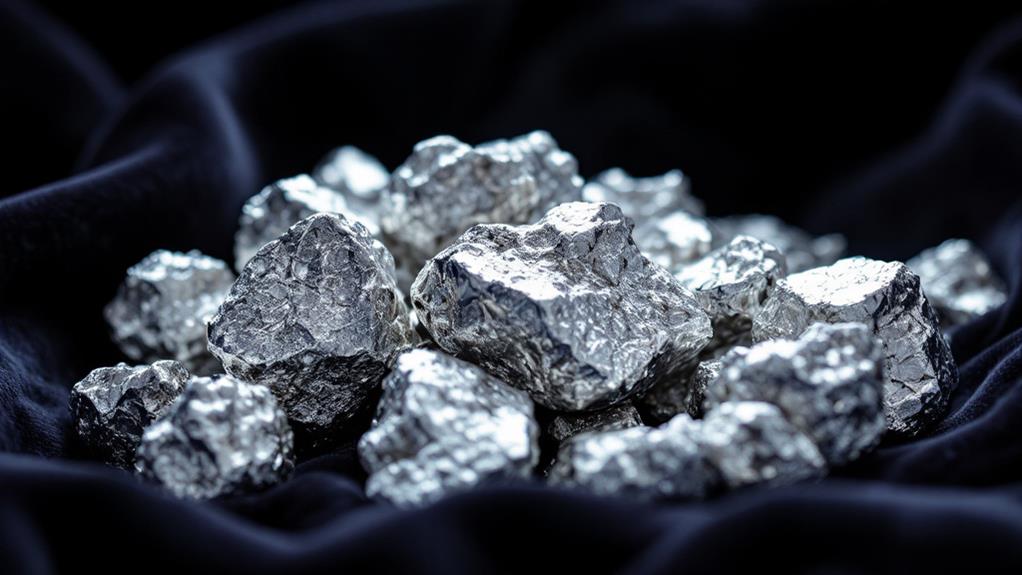
You'll find platinum intriguing due to its rarity and remarkable qualities. It's about 30 times rarer than gold, with all the platinum ever mined fitting into an average living room. Resistant to oxidation and corrosion, it holds its luster for generations. This metal's high melting point makes it vital in industrial uses like catalytic converters. Its hypoallergenic nature is perfect for jewelry and medical devices. Early civilizations knew its value, and by the 18th century, it gained significant appreciation. South Africa now provides 80% of the globe's supply. There's plenty more to uncover about this precious metal.
The Rarity of Platinum
Platinum's incredible rarity sets it apart from other precious metals. If you've ever wondered why platinum carries such a high price tag, it's all about scarcity. This precious metal is about 30 times rarer than gold. Imagine this: all the platinum mined in the world could comfortably fit inside an average living room, while gold could fill several homes. This stark contrast highlights the limited production of platinum, making it a coveted choice for those looking for a unique investment.
South Africa plays a crucial role in the platinum market, extracting roughly 80% of the world's platinum. This concentration in one region further emphasizes the metal's rarity. Russia also contributes considerably, but the general annual production remains just over 100 tons. This is a mere fraction compared to gold's output, which is nearly 14 times greater.
Such limited production, coupled with high demand, guarantees that platinum remains a valuable asset. Its rarity drives its premium pricing, making it an alluring investment option for savvy investors. When you consider the scarcity and concentrated sources, it's clear why platinum stands out among precious metals.
Historical Discoveries
Long before it gained its modern fame, platinum had an intriguing history of finding. The precious metal was initially uncovered by pre-Columbian civilizations, who utilized it between 600 BCE and 200 CE. However, it wasn't until 1557 that Italian physicist Julius Caesar Scaliger documented it, encountering platinum near what is now Mexico. Despite this early discovery, the Spanish conquistadors, who were primarily focused on gold, often dismissed platinum as a mere impurity during their valuable hunts.
By the 1600s, knowledge of this unique metal began to surface, but it took until the 18th century for interest to markedly grow. This shift was largely thanks to Antonio Ulloa, a Spanish explorer who conducted studies on platinum. His work sparked curiosity across Europe, leading British chemists to develop purification techniques vital for its refinement.
Platinum's increasing value and importance were further epitomized when Spanish colonizers minted the initial platinum coins in South America. These coins reflected not only the metal's growing significance but also its change from an overlooked impurity to a coveted commodity. Understanding this fascinating expedition offers deeper insight into platinum's rich historical tapestry.
Unique Chemical Properties
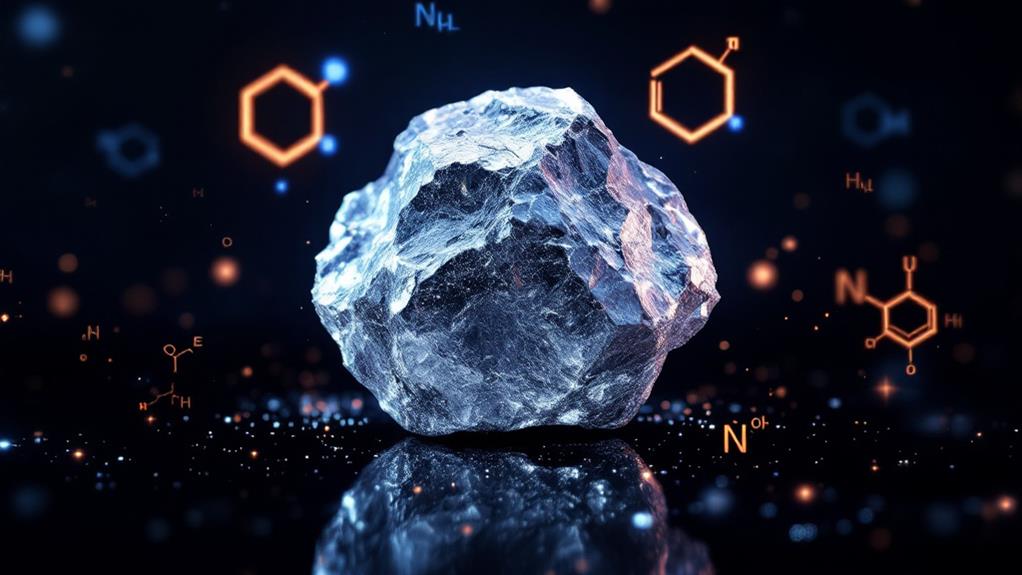
Imagine a metal that stands resilient against the elements, refusing to tarnish or corrode under normal conditions. That's platinum for you. With its unique chemical properties, platinum is exceptionally resistant to oxidation and corrosion, making it a top choice for long-lasting jewelry and diverse industrial applications. You won't see it tarnish in air, which adds to its long-term value.
Platinum's durability is impressive, maintaining its luster even when scratched, unlike many other metals. Its high melting point of 1,768°C (3,214°F) makes it suitable for high-temperature environments. This property guarantees that platinum can withstand conditions that would melt most other metals, reinforcing its reputation for toughness.
Additionally, platinum is largely chemically stable, reacting only with a few specific chemicals like cyanides, halogens, and sulfur. This stability makes it an ideal candidate for use in catalytic converters, where it facilitates chemical reactions without being consumed. In these converters, platinum plays a vital role in reducing harmful emissions from vehicles, showcasing its significance in environmental protection.
Industrial and Medical Uses
Did you know that nearly half of the platinum mined worldwide finds its way into industrial applications? This adaptable metal is a key player in many sectors. Its role as a catalyst is essential, especially in catalytic converters for vehicles. These devices help filter harmful emissions, guaranteeing compliance with environmental regulations. Platinum's unique properties, like its non-corrosive and hypoallergenic nature, make it indispensable in numerous applications.
In medical uses, platinum shines just as brightly. Its hypoallergenic properties make it perfect for dental crowns, pacemakers, and stents, providing safety and comfort for patients. Additionally, platinum-based compounds like cisplatin and carboplatin are fundamental in cancer treatment. They're used in chemotherapy, with about half of all patients receiving these life-saving drugs.
Here are some fascinating facts about platinum's industrial and medical applications:
- Catalyst in Production: Platinum is vital in producing nitric acid, a key ingredient for fertilizers.
- Industrial Stability: Its non-corrosive nature guarantees reliability in critical environments.
- Medical Safety: Hypoallergenic properties make it ideal for medical devices.
- Cancer Treatment: Platinum-based drugs are essential for chemotherapy.
Platinum truly is a metal of immense significance.
Platinum in Jewelry
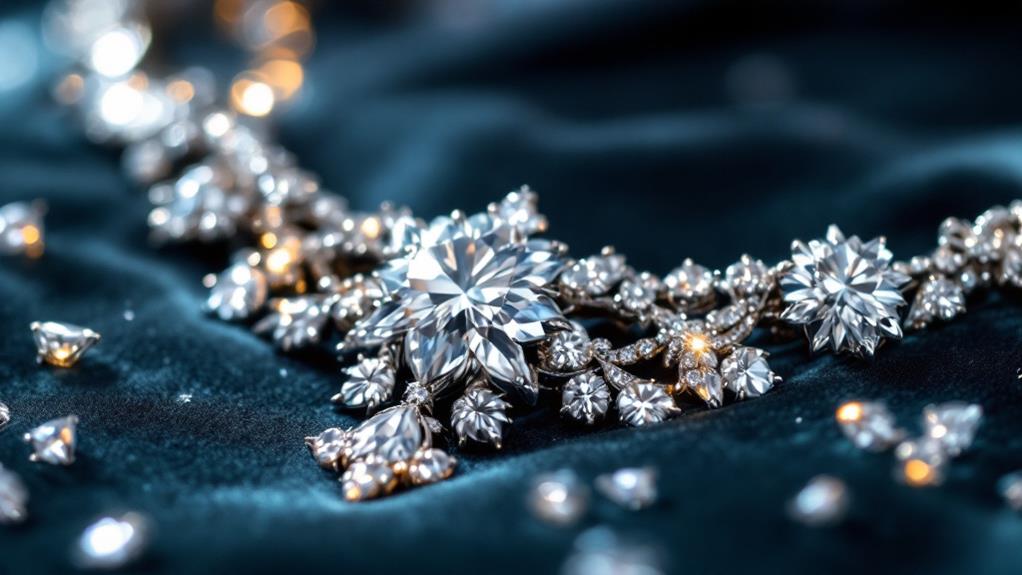
While platinum plays an essential role in industry and medicine, it also stands out in the domain of luxury jewelry. Opting for platinum jewelry means you're embracing a piece made from 85% to 95% pure platinum, which is typically purer than gold jewelry. This higher purity contributes to its allure among precious metals. Platinum's rarity—it's about 30 times rarer than gold—further enhances its desirability and market value, making it a symbol of exclusivity and sophistication.
Crafting jewelry from platinum isn't a simple task. Its high melting point and density demand specialized tools and expertise, which adds to its premium pricing. However, this investment offers long-term benefits. Thanks to its resistance to tarnishing and corrosion, platinum jewelry maintains its stunning appearance and structural integrity over generations.
For those with sensitive skin, platinum is an ideal choice. Its hypoallergenic properties considerably reduce the risk of allergic reactions, making it suitable for everyone. When you choose platinum, you're not just selecting a beautiful piece; you're opting for durability, luxury, and peace of mind. With its unmatched characteristics, platinum continues to shine brightly in the sphere of precious jewelry.

